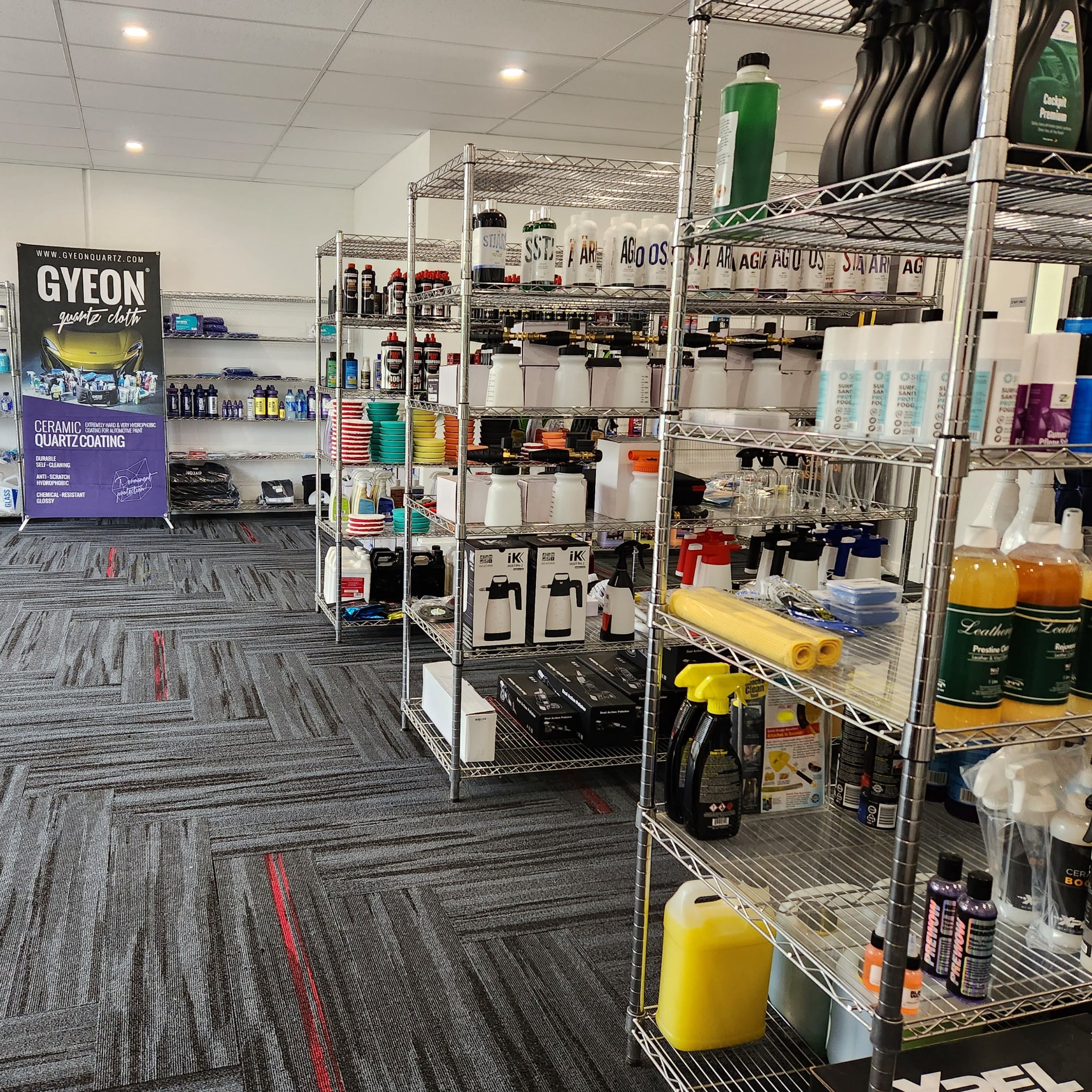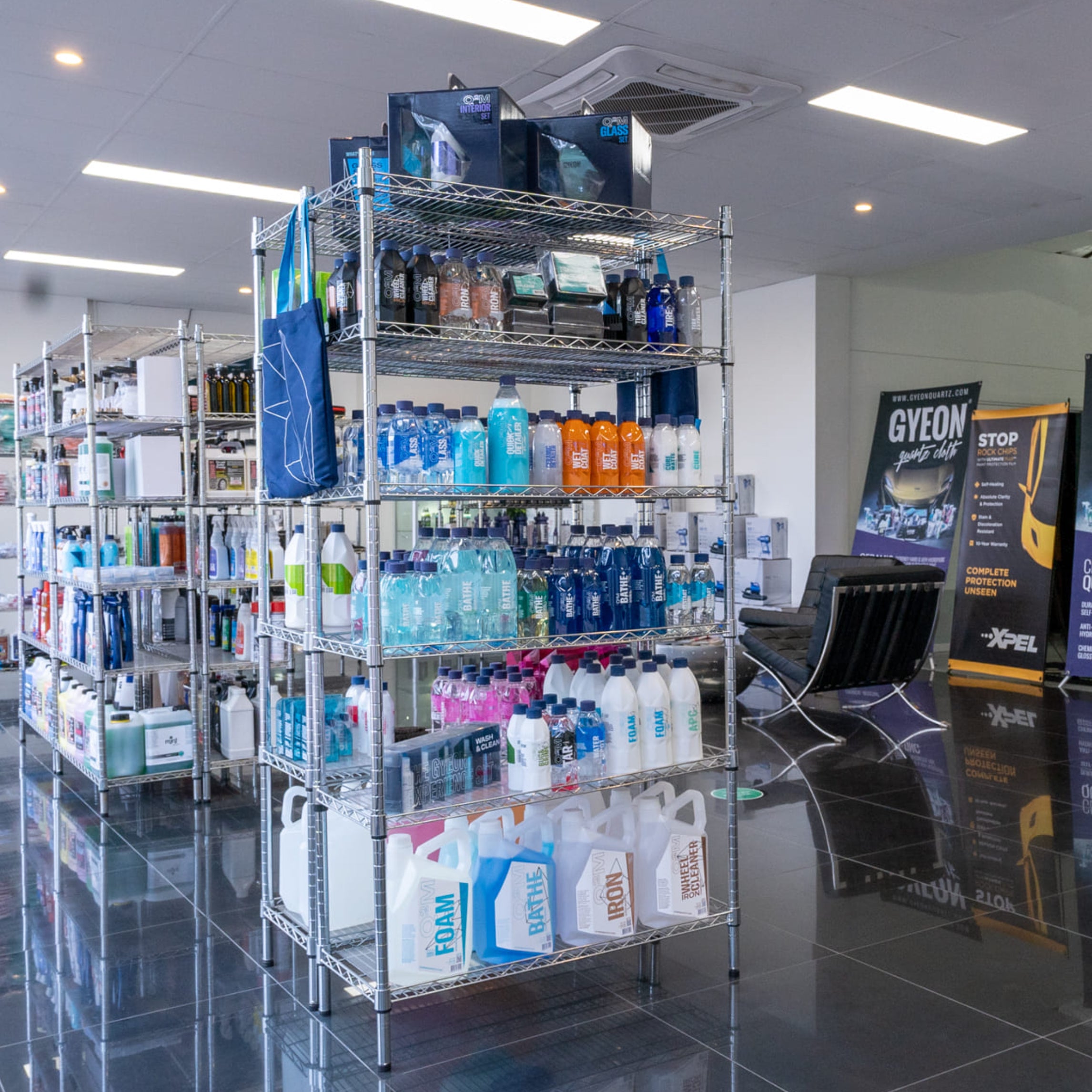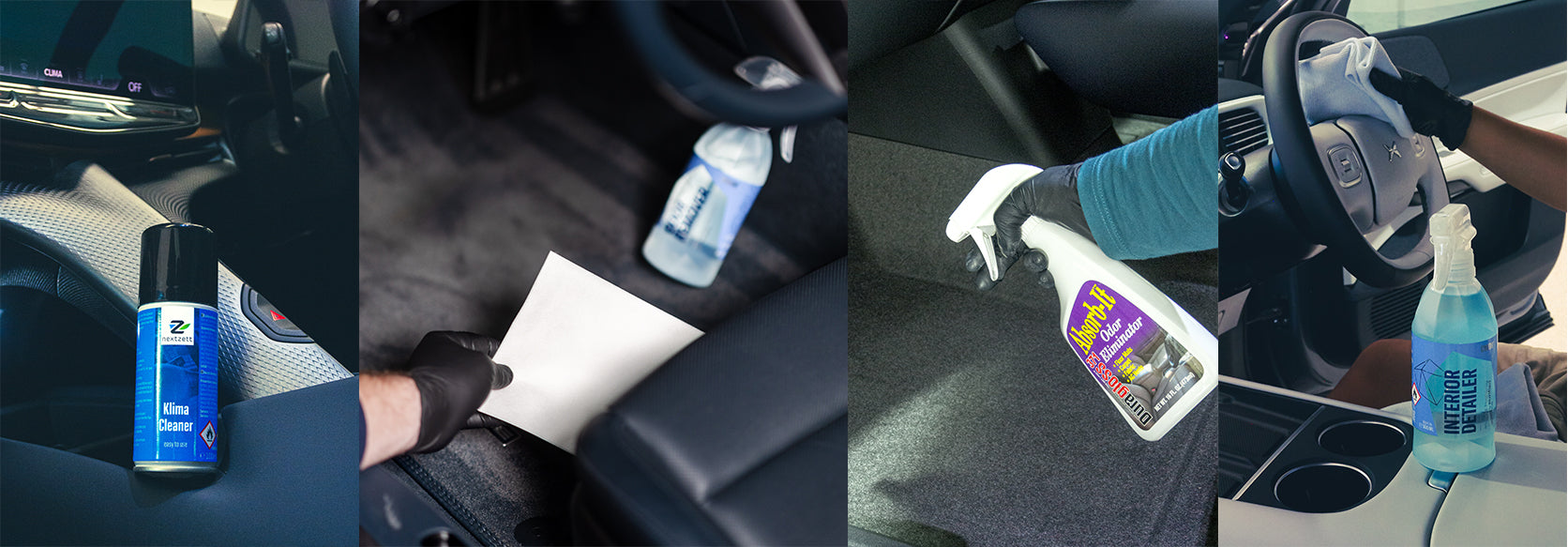Let’s be honest, most people avoid cleaning their engine bay like it’s a trip to the dentist. Out of sight, out of mind, right? But here’s the thing: keeping your engine bay clean doesn’t just make your car look better, it helps it last longer, run cooler, and can save you some serious coin if you catch problems early.

Whether you're prepping for a show, trying to boost resale value, or just love the idea of a car that's clean inside and out, this guide has everything you need to safely clean and protect your engine bay without causing damage.
Why You Should Care About Your Engine Bay
Cleaning under the bonnet isn’t just for show-offs. A clean engine bay:
- Helps your engine run cooler by reducing grime that traps heat.
- Makes spotting oil leaks or damaged hoses easier, before they become major issues.
- Protects plastic and rubber parts from heat and UV damage.
- Boosts resale value by showing potential buyers that you actually look after your car.
In short, it’s worth your time. And in Australia, where dust, dirt and heat are constant enemies, it’s even more important.
Still not convinced? Picture this: your bonnet’s up, someone’s about to check out your ride, maybe it’s a potential buyer, a judge at a local cars and coffee meet, or even your mechanic. What’s going to leave a stronger impression: a crusty, neglected engine bay, or one that looks as fresh as the day it left the factory?

A clean engine bay isn’t just about vanity, it tells a story. That you’re detail-oriented. That you maintain your car properly. That you didn’t just wash the outside to hide neglect. And trust us, people notice.
Step-by-Step: How to Clean Your Engine Bay Properly
1. Prep First — Safety First
- Let your engine cool completely. Cold water and hot parts? Not a good mix.
- Park in the shade or inside your garage. Cleaning chemicals dry too fast in the sun.
- Disconnect the battery if you’re confident, or at least cover electricals (alternator, battery, exposed wiring) with plastic bags and tape.
- Wear gloves and eye protection, degreasers can be harsh.
If you’re working on a modern engine bay, full of sensors, plastic covers and fragile clips. Remember, it’s better to mask off areas you’re unsure about than risk water intrusion. Modern ECUs and connectors are more water-resistant than you might think, but that doesn’t mean you should get careless.
2. Gather the Right Gear
You don’t need a full workshop to do this right. Here’s your basic engine bay kit:
- Soft-bristle detailing brush
- Microfibre cloths
- Garden hose or low-pressure washer
- Degreaser or all-purpose cleaner (like GYEON APC or Duragloss Ultimate Orange Cleaner)
- Plastic bags & masking tape
- Air compressor or leaf blower (optional, but handy)
- A bucket of clean water (for rinsing your brushes)

Optional but helpful:
- Trim brush for tight areas
- Detailing swabs or foam tips for corners
- Handheld inspection light
3. Decrease and Agitate
Spray your cleaner across the engine bay, but don’t flood it. Let it sit for 2–3 minutes. Then use your brush to gently agitate around caps, hoses, and covers. Work from top to bottom so the grime falls away instead of onto cleaned parts.
- For light grime: Use GYEON APC, diluted depending on the job.
- For heavy build-up or oil, reach for Duragloss Ultimate Orange Cleaner. The citrus base packs a punch.
Don’t forget places like:
- Under the bonnet (sound deadening pad, frame edges)
- Firewall seams
- Around strut towers
- Inside the bonnet latch assembly
4. Rinse Smart, Not Hard
Use a light spray from a hose or pressure washer on the lowest setting. Don’t blast water into sensitive areas. Be gentle, this is about rinsing, not flooding.
Tip: Hold the nozzle at a distance and let the water run down surfaces, rather than jetting it straight on.
5. Dry Thoroughly
Use microfibres to blot away moisture, then bring in an air compressor or blower to get water out of crevices. Don’t rush this. Trapped water = corrosion and potential issues later.
Spend some time here, it’s the difference between a great detail and one that causes problems down the track. Don’t forget the battery terminals, fuse boxes, and around the edges of the bonnet insulation.
The Best Products for Engine Bay Cleaning & Protection
GYEON APC – The All-Rounder
A concentrated all-purpose cleaner that’s strong enough for engine grime but safe enough for painted and plastic surfaces. Dilute it to suit the task, one bottle can handle a dozen different jobs. Foams up nicely, clings well, and lifts dirt without scrubbing too hard.

Duragloss Ultimate Orange Cleaner – The Heavy-Duty Option
Stubborn grease and oil? This citrus-based cleaner cuts through the worst of it. Biodegradable and safe when diluted, it’s perfect for the greasiest engine bays. Use it on valve covers, firewall gunk, or around old oil leaks.
GYEON Preserve – That OEM Look
After cleaning, use GYEON Preserve to restore that fresh, matte factory finish. It revives faded plastics and rubber, adds UV protection, and doesn’t leave the engine bay looking greasy. Just a quick wipe and you’re done.
GYEON Trim – For Next-Level Protection
For trims that need more than just a quick touch-up, GYEON Trim offers a ceramic-based coating that actually bonds to the surface. It leaves a deep satin finish and repels water, dirt and oils, keeping your engine bay cleaner, longer.
Nextzett Gummi Pflege Rubber Care Stick
Don’t forget the rubber seals under your bonnet. This conditioning stick keeps them soft, crack-free, and stops them from sticking. Crucial for protecting against heat and sun damage.

Common Mistakes to Avoid
Even seasoned detailers can get it wrong under the bonnet. Here are a few don’ts that’ll save you a headache:
- Never clean a hot engine. Ever.
- Don’t flood it with water. Low-pressure rinse only.
- Don’t skip the plastic bag step. Cover your electricals.
- Avoid household cleaners. They’re not pH balanced and may strip coatings or leave residue.
- Don’t use stiff brushes. Soft detailing brushes protect plastics and finishes.
- Take your time drying. Leftover water causes rust and electrical issues.
- Don’t apply greasy/silicone dressings. They’ll attract dust and grime. Stick to water-based or satin-finish protectants.
Bonus Tips for an Even Better Clean
- Use a trim brush or an old toothbrush to reach tight areas around sensors, caps, and bolts.
- Use compressed air to blast out leaves or dirt from crevices before you spray anything.
- Clean your engine bay every 3-6 months, or more often if you’re off-roading or commuting in dusty areas.
Final Word
Cleaning your engine bay might feel like a big job, but once you’ve done it properly and safely, you’ll wonder why you didn’t start sooner. It’s not just about looks (though it does look great). It’s about preserving your car’s condition, avoiding expensive repairs, and taking pride in a job well done.
And the good news? You don’t need a workshop setup or a $300 detailing kit. With a bit of time, some solid gear, and the right approach, anyone can get great results.
Armed with the right products, like GYEON APC, Duragloss Orange Cleaner, and GYEON Trim, you’ll not only get a bay that’s clean today, but one that stays clean and protected for months to come.
FAQs
1. How often should I clean my engine bay?
Every 3 to 6 months, depending on how often and where you drive. More if you're off-roading or in dusty regions.
2. Can I use household degreasers?
Avoid them. They’re often too harsh, not pH balanced, and can damage surfaces or leave residue.
3. What if I get water on something I shouldn’t?
If you’ve covered things properly, it should be fine. But if something gets wet, let it dry thoroughly before starting the engine.
4. Will a clean engine bay improve performance?
Not directly, but it can reduce heat build-up, help you catch issues early, and keep everything running cleaner.
5. Is this safe for hybrids or EVs?
Yes, but be extra careful around high-voltage areas. Always check your owner’s manual and follow the manufacturer’s advice.
6. Can I pressure wash my engine bay?
Yes, but only on the lowest setting and with care. Focus on rinsing, not blasting. Keep your distance and avoid directly spraying electrical connections.
7. What’s the best time of day to clean an engine bay?
Morning or late afternoon, avoid direct sunlight and hot panels. Shaded, cool conditions give you the best working time.





